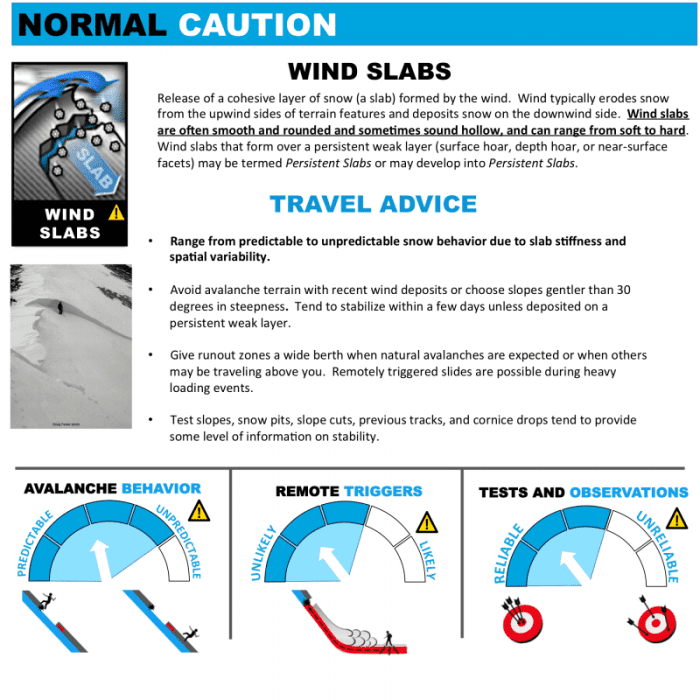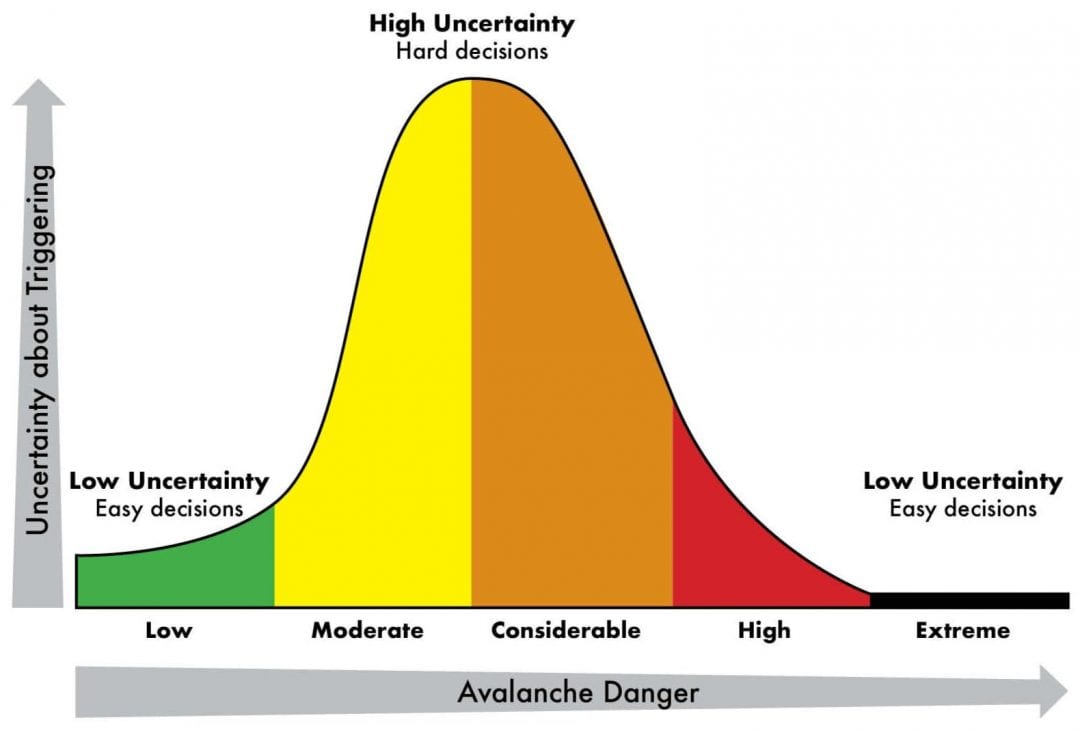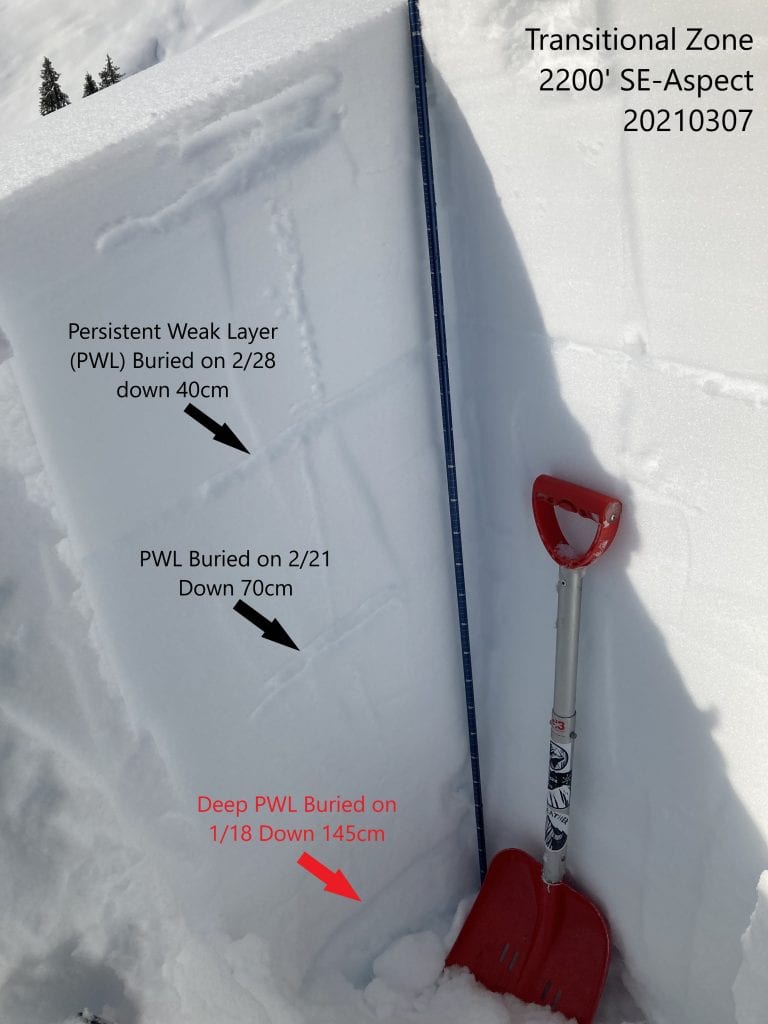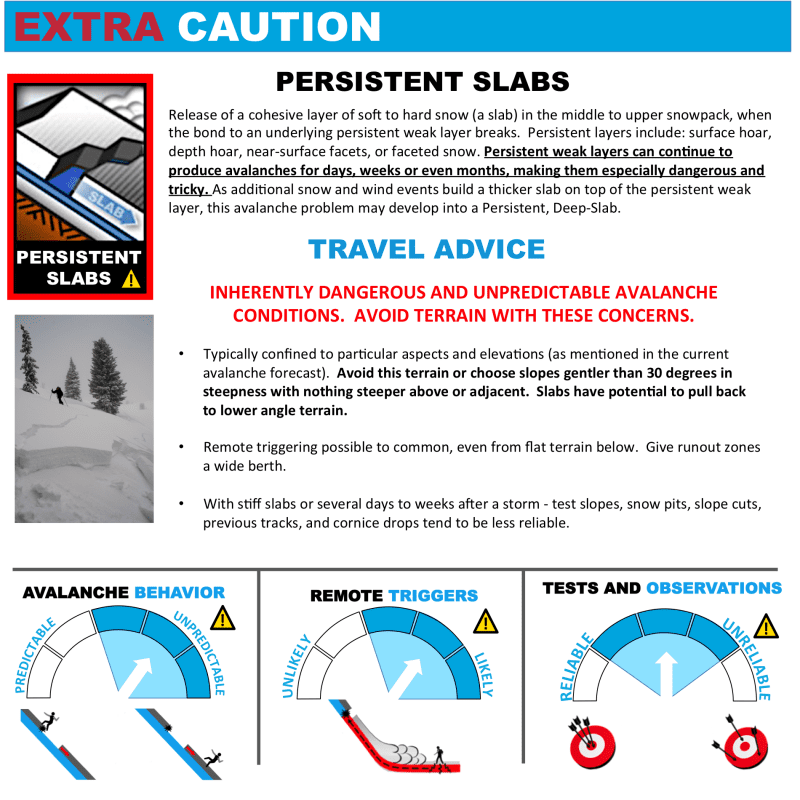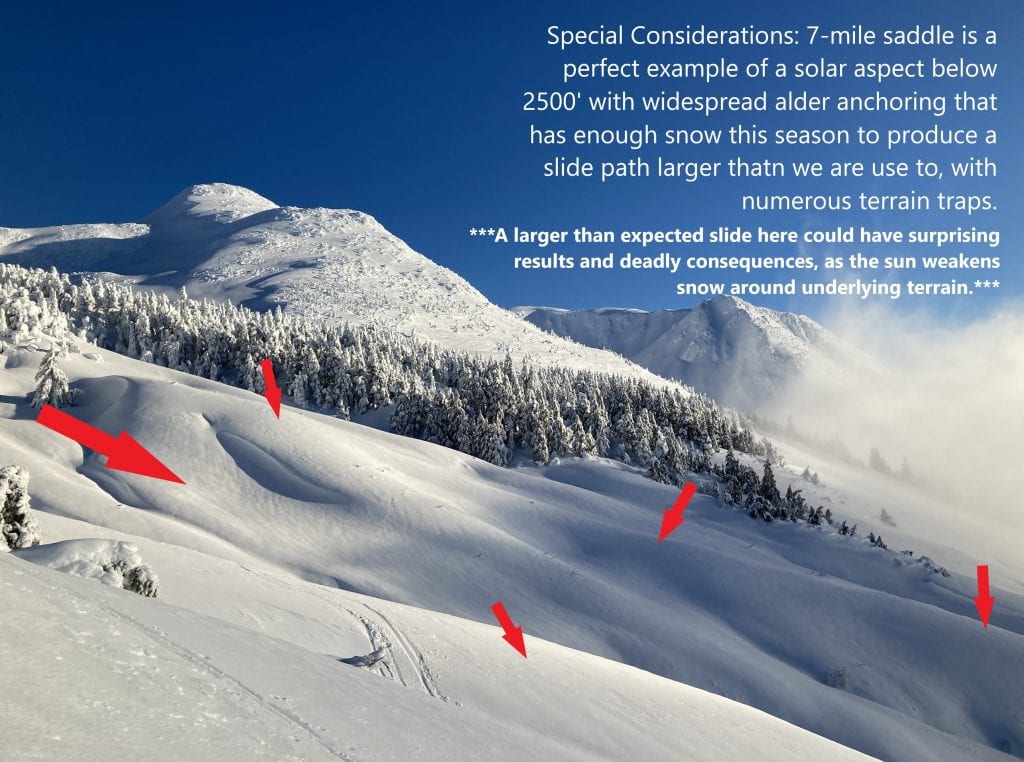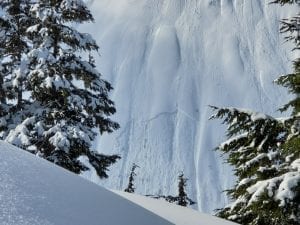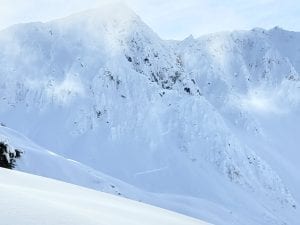Haines Avalanche Center
Above 2,500ftHigh
1,500 to 2,500ftHigh
Below 1,500ftConsiderable
Degrees of Avalanche Danger
Avalanche Problems
Problem 1
Moderate to strong winds from the north and storm total accumulations of up to 1-3′ at higher elevations have increased the likelihood of human triggered wind slabs near and above treeline. Moderate to strong south winds Wednesday – Friday have created a reverse loading effect. Fresh wind slab has likely formed over near-surface facets and surface hoar, the newest persistent weak layer (PWL) from 2/28 and 3/1.
- Identify and avoid suspect wind loaded slopes
- These surface instabilities are over deeper buried PWL‘s
- Increased wind slab hazard adds overall complexity
- Use extra caution traveling below run-out zones
Likelihood:
- Almost Certain
- Very Likely
- Likely
- Possible
- Unlikely
Size:
- Historic
- Very Large
- Large
- Small
Trend
- Increasing
- Steady
- Decreasing
Problem 2
Persistent weak layers include now buried surface hoar and facets/crusts that are located down at approximately 40cm and 70cm. These PWL‘s were buried during the 2/21 and 2/28 storms (see pit photo below).
- The location of these weak layers are difficult to map and highly elevation and aspect dependent.
- Glacier effect and valley effect are two contributing factors to where surface hoar has developed, along with freezing levels that have helped hard crusts and facets combinations to form.
- Remember sheltered terrain could equal protected areas where surface hoar survived and is now buried.
- Solar aspects are warming in the spring sun and have especially poor structure.
- Consider underlying terrain such as alder, trees, rocks, and cliffs suspect trigger points.
- Sunlight weakens surrounding snow and those are areas you more likely could trigger an avalanche from.
According to the graph below, we currently are in the highest uncertainty about triggering an avalanche and find ourselves making hard decisions to stay safe. Keep your safety margins wide at this time. While you may be able to “thread the needle” and find slopes with good stability, this continues to be a difficult task and the stakes are quite high.
- Slope angle is as important as ever when traveling through avalanche terrain, as well as slope failure consequences like terrain traps or group spacing.
- Only expose one person to a slope at a time and carefully identify run-out zones, starting zones, defined paths and non-defined paths.
- Beware of the familiarity heuristics “this slope never slides” as the snowpack is not giving us positive feedback for getting lucky.
- Look for a deep consistent snowpack without strong over weak layering and expect avalanches to break bigger and run longer than expected.
- More recent surface hoar 2/28 & 3/1 may have been buried by wind transport and reverse loading, as winds this past week switched from South to North.
Likelihood:
- Almost Certain
- Very Likely
- Likely
- Possible
- Unlikely
Size:
- Historic
- Very Large
- Large
- Small
Trend
- Increasing
- Steady
- Decreasing
Problem 3
A deep slab persistent weak layer exists in two areas:
- In widespread terrain near and below 3000′ down ~150cm where facet buried on 1/18 are located.
- In specific very steep, exposed, high alpine terrain down ~300-400cm where November depth hoar is buried.
Heavy triggers like cornice falls and snowmachine drops are more likely to trigger the deep weak layer. Any slabs that break 1m+ deep are likely to be deadly. South aspects are known to have poor structure and are getting baked by strong solar radiation when the sun comes out, which weakens the snowpack. Upper persistent slab avalanches could step down, release sympathetically, or remotely trigger deeper layers (see Persistent Slab above).
We are in the most deadly time of year in Haines. Early March has historically brought tragic accidents with large avalanches that break much wider than expected.
Likelihood:
- Almost Certain
- Very Likely
- Likely
- Possible
- Unlikely
Size:
- Historic
- Very Large
- Large
- Small
Trend
- Increasing
- Steady
- Decreasing
Weather
Due to a high pressure system over the Yukon, a moderate-to-strong north wind has caused temperatures to drop into the single digits overnight and remain in the low teens Saturday during the day, with wind chill values to -20F. This follows a low pressure system that produced 3-4″, slightly increasing temperatures and winds moderate-to-strong out of the south-east. Expected partly cloudy weather with trace amounts of precipitation Saturday and clearing weather Sunday with freezing temperatures.
| Snow Depth [in] | Last 24-hr Snow/SWE [in] | Last 3-days Snow/SWE [in] | Today’s Freezing Level [ft] | Today’s Winds | Next 24-hr Snow/SWE | |
| Mount Ripinsky @ treeline | 140″+* | 1″ / 0.05* | 5″ / 0.40* | 0′ | moderate, N | 0.5″ / 0.05* |
| Flower Mountain @ treeline | 103″ | 1″ / 0.05 | 2″ / 0.20 | 0′ | moderate, N | 0.5″ / 0.05* |
| Chilkat Pass @ 3,100ft | 60″ | 0″ / 0.00 | 2″ / 0.10 | 0′ | moderate, N | 0.5″ / 0.05* |
( *star means meteorological estimate )
—The Mt. Ripinsky weather station is completely buried and no longer reporting.—
Additional Information
Practice like you play. Make sure all your rescue gear it is fully functional and your beacon has full batteries. Make sure 1) everyone in the group has a functioning beacon, shovel and probe 2) knows how to use them and 3) has trained in companion rescue in the last year. Keep your skills fresh. If you head into the hills, watch out for red flag avalanche conditions, natural avalanches, whoomphing or collapsing, and shooting cracks.
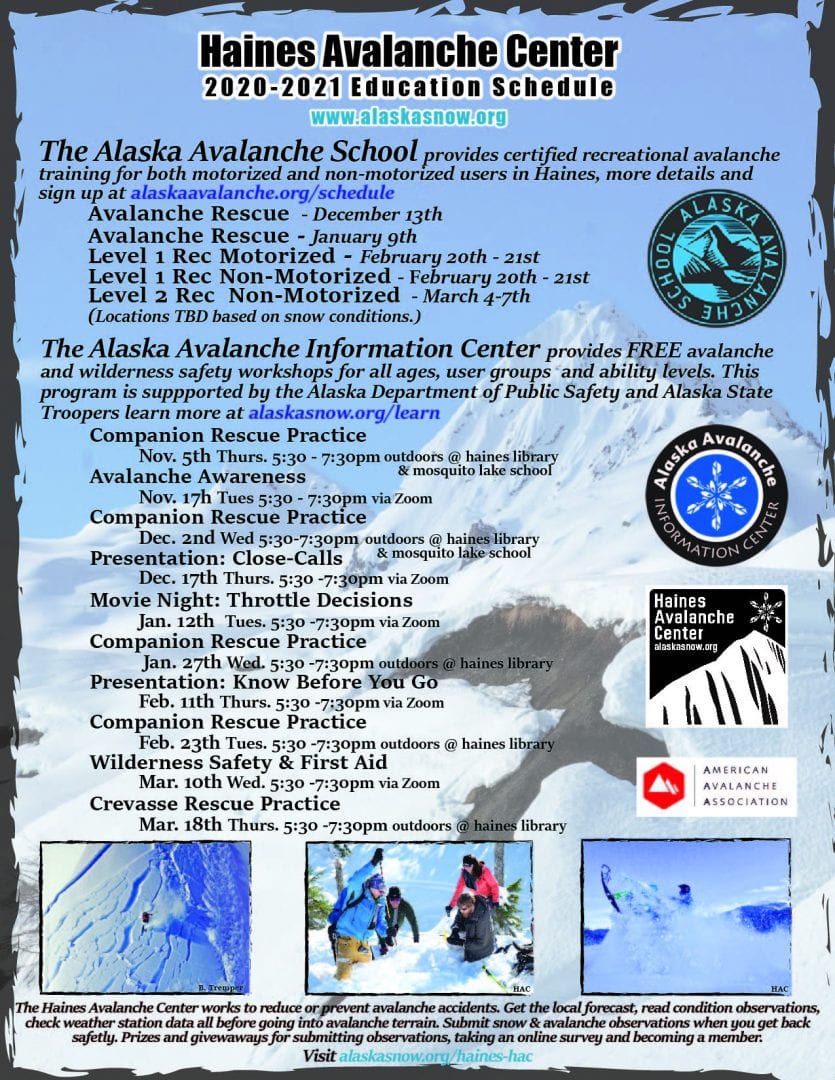
Education Video Links:
- AIARE
- How to Practice Avalanche Rescue Snowmobile Edition: https://youtu.be/2ML499MMDfM
- AK Sled Shed Motorized Learning:
- Intro: https://youtu.be/aoagKHfGkxs
- Personal Electronics in Avalanche Terrain: https://youtu.be/2Vz9S0OEyFk
- Snowmobile Macgyver Tool Kit: https://youtu.be/4WBNu_t6Bbk
- Head and Face Protection: https://youtu.be/jIzW89wOyZI
- Pre-season prep: https://youtu.be/zJmrb8cZlR4
- My Transceiver: https://youtu.be/yblaDWP7Jf8
- BCA Avalanche Safety for Snowmobilers
- How to Fix Common Snowmobile Problems in the Field: https://youtu.be/g9fiTxEvuFk
- Sleducation: Avalanche Safety for Snowmobilers: https://youtu.be/EWFOd_9DYb8
- Intro to Avalanche Transceivers for Snowmobilers: https://youtu.be/6ZLSBmsceog
- Avalanche Transceiver Trailhead Test for Snowmobilers: https://youtu.be/rWoXbadFBsY
- Avalanche Transceiver Searching Use Snowmobiles: https://youtu.be/w1ucyI6LMXM
- BCA Avalanche Rescue Series
- Beacon Search 101: https://youtu.be/nnHXLVA2FcE
- Avalanche Probing 101: https://youtu.be/-0_yDN5Drzw
- Avalanche Shoveling 101: https://youtu.be/dGQg9o3vAkM
- Organizing a Backcountry Rescue: https://youtu.be/gywtmukgt8s
- Post Avalanche Patient Care: https://youtu.be/9FyIeUy4wpQ
- Backcountry Evacuation: https://youtu.be/WPF-dciefL8
- Complex Multiple Burials Backup Techniques: https://youtu.be/pB6AfY2KyYo
- National Avalanche Center
- Avalanche Problems Explained: https://youtu.be/DkbnT_9-cHU
- Intro to North American Avalanche Danger Scale: https://youtu.be/r_-KpOu7tbA
Announcements
Click the + Full Forecast link below for each zone to read more. BOTTOM LINE THIS WEEKEND: We still have a complex snowpack, keep your safety margin wide.
